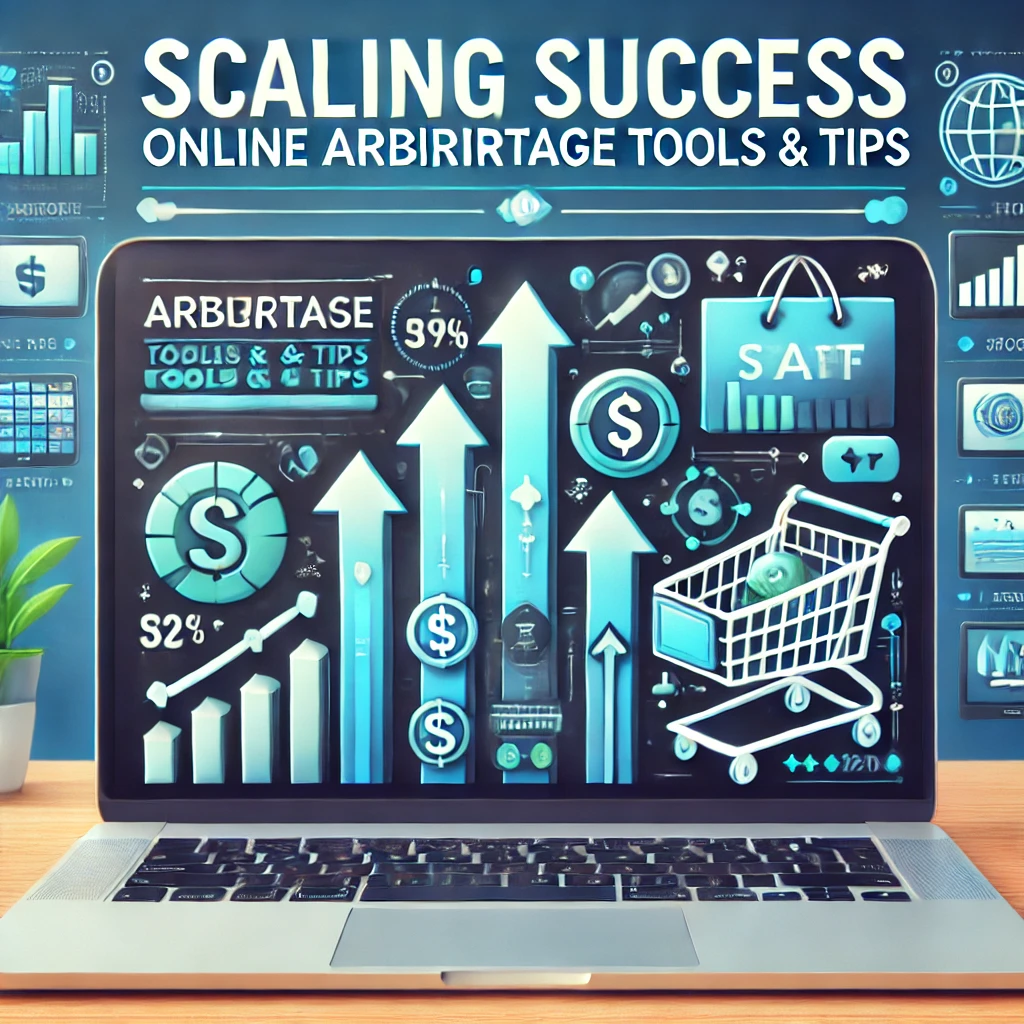Unlocking the Secrets of Online Arbitrage: How to Profit in the Digital Marketplace
In today’s digital world, many are searching for ways to earn a profit online, and online arbitrage offers a lucrative opportunity for both beginners and experienced entrepreneurs. But what is online arbitrage, and how can you turn it into a successful venture? This guide will take you through the ins and outs of online arbitrage, showing you how to leverage price differences between platforms to build a profitable business.o this exciting and rewarding field.
What is Online Arbitrage?
Online arbitrage is the process of buying products from one online retailer at a lower price and reselling them on another platform, like Amazon or eBay, for a higher price. It’s all about buying low and selling high, capitalizing on price discrepancies to create a profit margin. The process involves market research, purchasing, listing products, and making sales—all from the comfort of your home.
Why is Online Arbitrage Profitable?
The main appeal of online arbitrage lies in its low barrier to entry and high potential returns. Unlike traditional businesses that require significant upfront investment, online arbitrage allows you to start with just a small budget. Moreover, it offers the flexibility to work from anywhere, adapt quickly to market trends, and scale your business over time.
Learn more about online arbitrage here
How to Start Online Arbitrage: Step-by-Step Guide
1. Research and Product Sourcing
The first step in online arbitrage is finding profitable products. Tools like Keepa, CamelCamelCamel, and Jungle Scout help track price history, demand, and competition on various platforms. Look for products with price fluctuations or clearance sales on websites like Walmart, eBay, or Target. The goal is to find items with a significant price difference between the purchase and selling platforms.
2. Purchasing and Logistics
Once you’ve identified a product, buy it quickly before it goes out of stock. Timing is essential in online arbitrage. Many sellers use fulfillment services like Amazon FBA (Fulfillment by Amazon) to handle shipping and customer service. With Amazon FBA, you can send your inventory to Amazon, and they’ll store, pack, and ship your products, saving you time.
Discover more about using Amazon FBA here
3. Listing and Selling
Create attractive listings on platforms like Amazon, eBay, or your own website. Make sure to use high-quality images, detailed descriptions, and competitive pricing. Pricing tools can help you automate pricing adjustments, ensuring your product stays competitive without constantly monitoring prices.
4. Customer Service and Returns
Providing great customer service is key to maintaining your reputation and ensuring repeat business. Be prepared to handle inquiries and returns professionally, as customer satisfaction is critical on platforms like Amazon and eBay. Poor service can lead to penalties or account suspension.
Overcoming Challenges in Online Arbitrage
While online arbitrage is profitable, it comes with its challenges. Increased competition and cash flow management are two common hurdles. The demand for profitable products means you must stay ahead by constantly researching and exploring new niches. Managing cash flow is crucial, as you may face delays between purchasing products and receiving payment from sales.
- Tip: Plan your finances and always have enough capital for purchasing new stock.
Learn more about managing cash flow in e-commerce here
Tools and Software to Succeed in Online Arbitrage
The right tools can make all the difference in online arbitrage. Here are a few essential tools:
- Keepa: Tracks price history on Amazon to help you identify the best time to buy and sell.
- Jungle Scout: Provides sales estimates and competition analysis to find profitable products.
- InventoryLab: Helps manage stock, track profitability, and streamline your business.
- Repricers: Automates price changes to ensure you stay competitive on platforms like Amazon.
Using these tools can streamline your operations, helping you source products faster and manage your listings more efficiently.
Scaling Your Online Arbitrage Business
As you become more familiar with the process, consider scaling your online arbitrage business by expanding into different product categories or selling on multiple platforms like Walmart, eBay, or Shopify. Diversifying your product range reduces risk and opens up new revenue streams.
You can also automate certain aspects of your business, such as product sourcing or customer service, by using virtual assistants or specialized software. This allows you to focus on growing your business without getting bogged down by day-to-day tasks.
Find out how to scale your e-commerce business
Advanced Strategies: Private Labeling and Bundling
To further increase your profits, consider private labeling or bundling products. Private labeling involves creating your own brand around a product, giving you more control over pricing and reducing direct competition. Bundling products—combining related items into one listing—can also increase your profit margins by offering customers a perceived added value.
Learn more about private labeling and bundling strategies
Online arbitrage offers a flexible and scalable way to earn a profit in the growing digital economy. By understanding the process, using the right tools, and staying ahead of market trends, you can create a successful and sustainable business. Whether you’re looking to supplement your income or build a full-time business, online arbitrage provides endless opportunities for growth.
Start small, learn the ropes, and continuously refine your approach as you gain experience. The potential for success is vast, and with dedication and the right strategies, you can turn online arbitrage into a thriving business.
Subscribe for more tips on building a profitable online business
